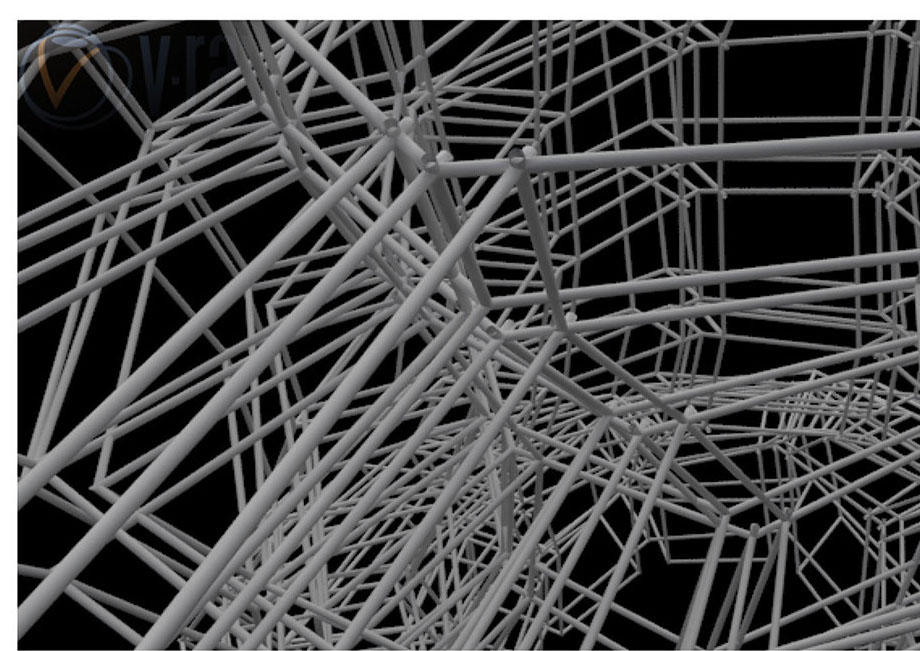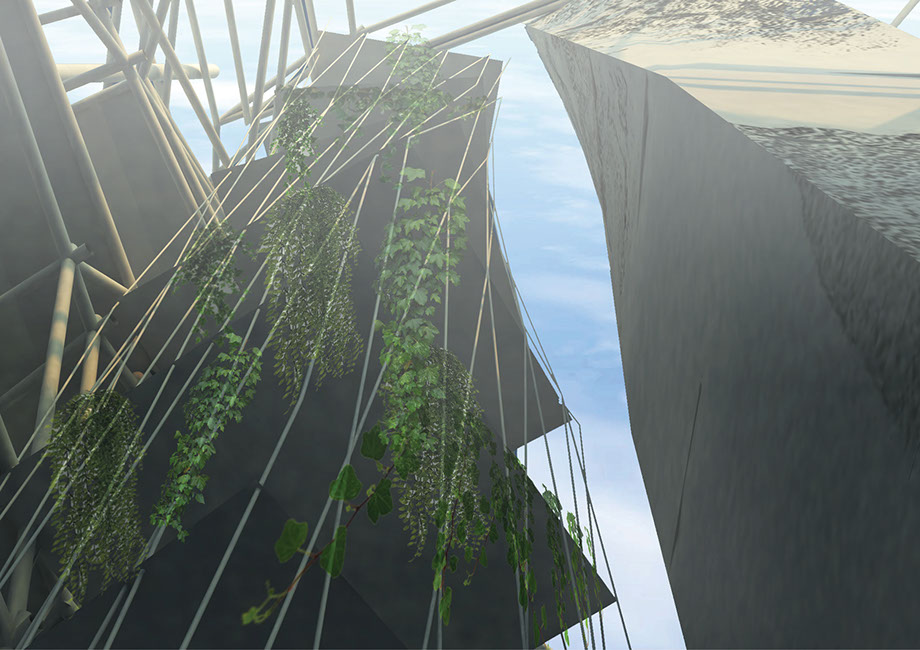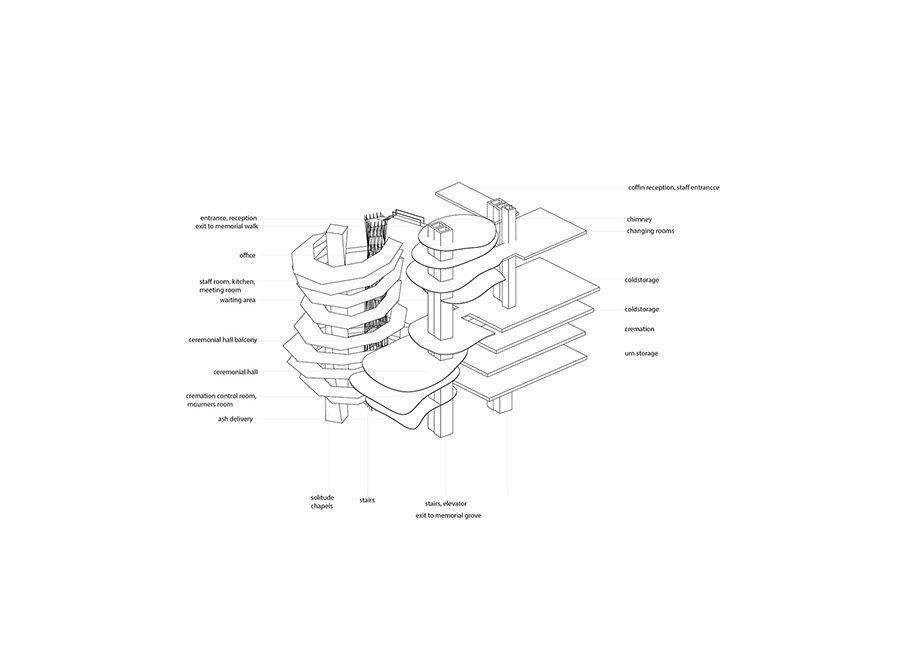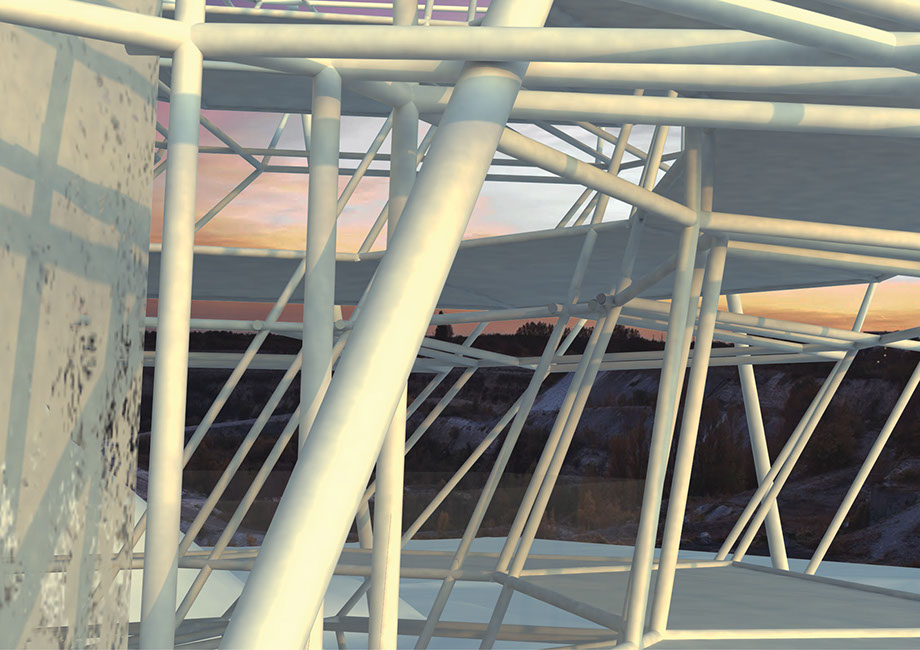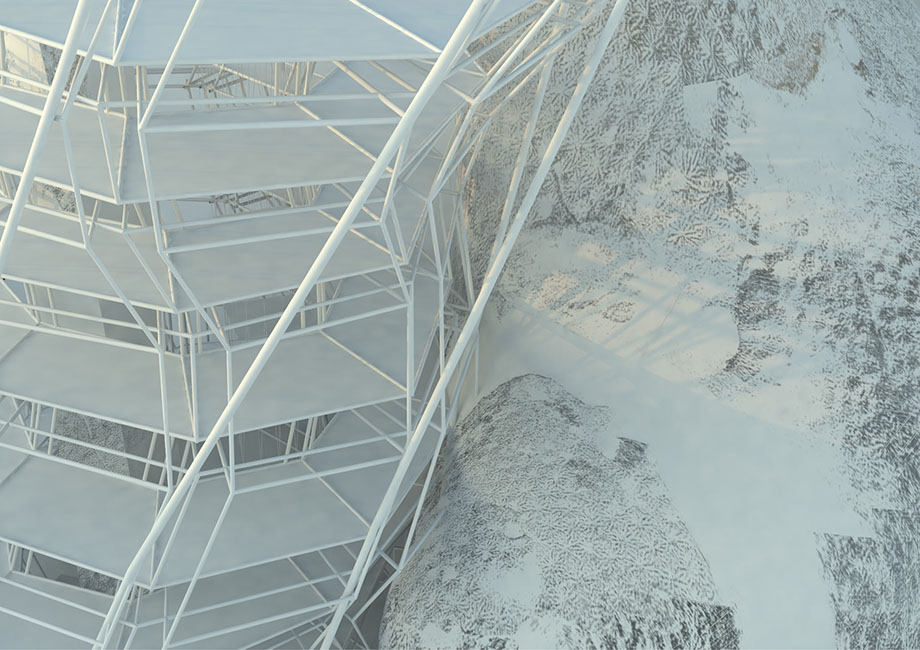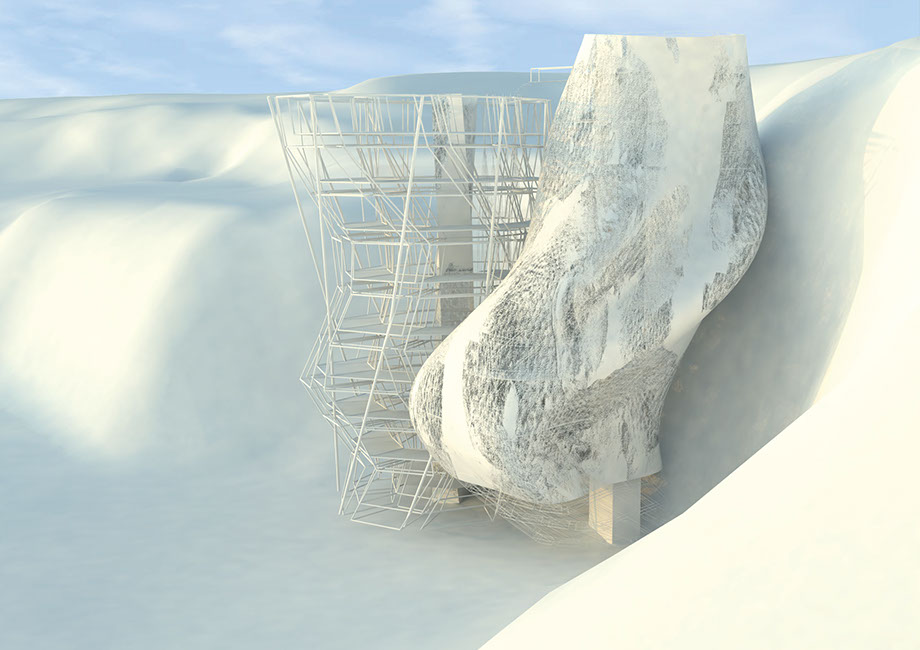
Dichotomy - a crematorium in the quarry
“Dichotomy: A division or contrast between two things that are or are represented as being opposed or entirely different” (Oxford dictionaries)
That is what the project is about. It concerns transparency and solid, light and darkness, control and the uncontrolled and ultimately life and death.
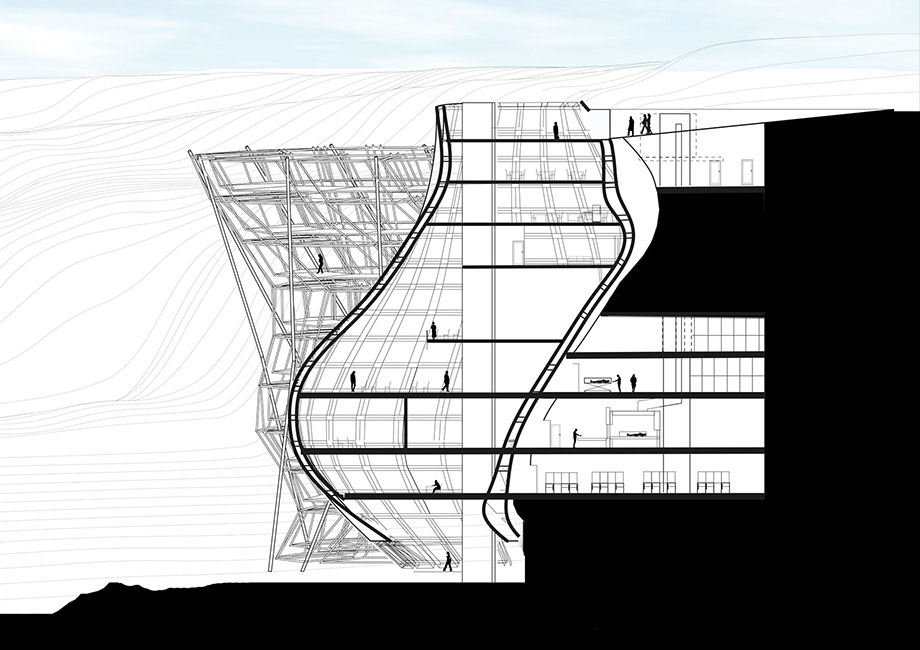
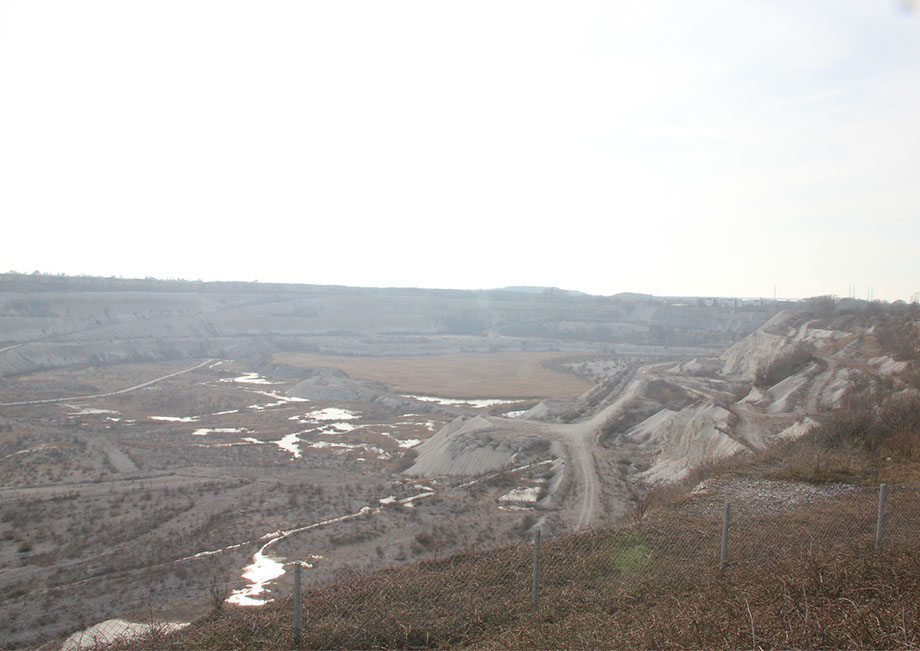
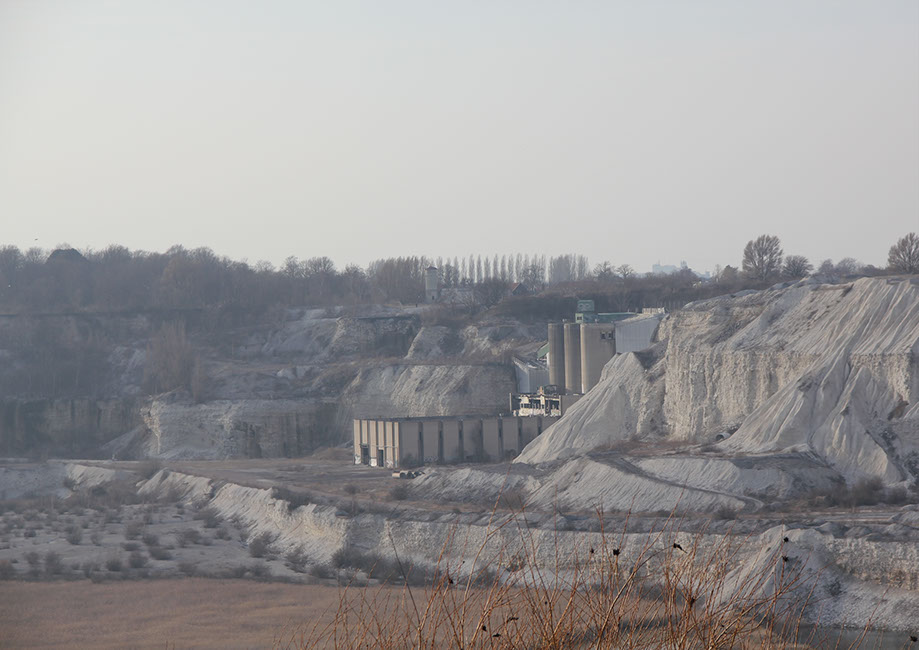
Machines, dynamite and manpower is what made this extraordinary place what it is. The Limhamn quarry has been in constant transformation since the 1880s when the digging begun and each annual ring does add something extra, making the place more interesting. Because of this I feel like using machines now and changing the environment now is ok to do. In 1994 when the industry stopped in the quarry there was hardly any nature or animals in there. Since then this has changed dramatically and the vast amount of rare species has made sure the quarry is now a national reserve. When building in the quarry I think it is important to have the animals and plants interest in mind but the quarries history also shows that nature can take over man made things and make it better.
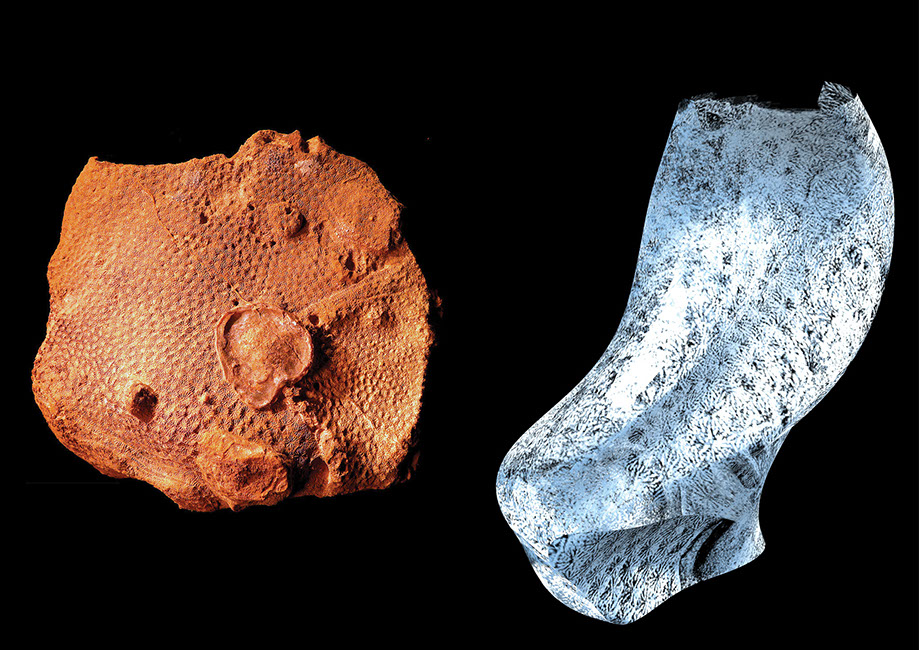
One of the things that makes the limestone quarry so interesting and special is the geological history contained in it. The presence of remains from 65 million years ago is fascinating. Like the fact that you can find fossils of corals from when the area was a warm sea situated near current Spain. (Malmö stad 2010)
With all the geological findings in the area the presence of time and death is always present in the area. This makes it ideal for contemplating life, grasping the idea of the death of a loved one and for mourning.
In a workshop about mapping Jonna Idsäter and I were inspired by Stan Allen’s ideas about objects to fields. We zoomed in on the site and looked at small objects that together formed a whole. The small objects we found were fossils with a magnificent story to tell. The structure of the fossils were to me also something beautiful and interesting. In the crematorium I used the texture as a glass façade creating an atmospheric experience on the exterior as well as the interior.
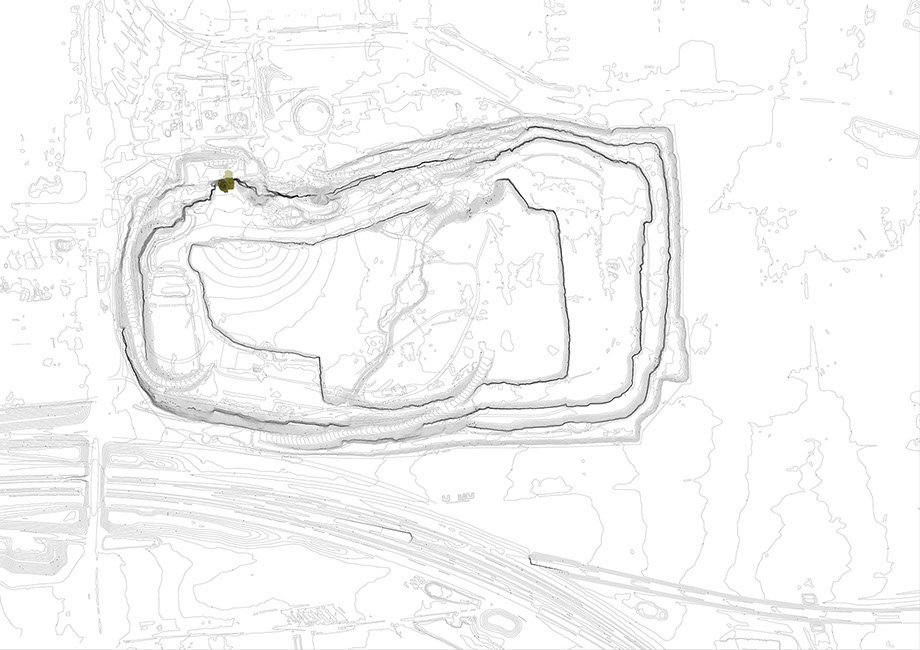
The location of the crematorium is in the north-west of the quarry. There are old industrial buildings, asphalt ground and a kind of sloppiness that I think could benefit from having a building there.
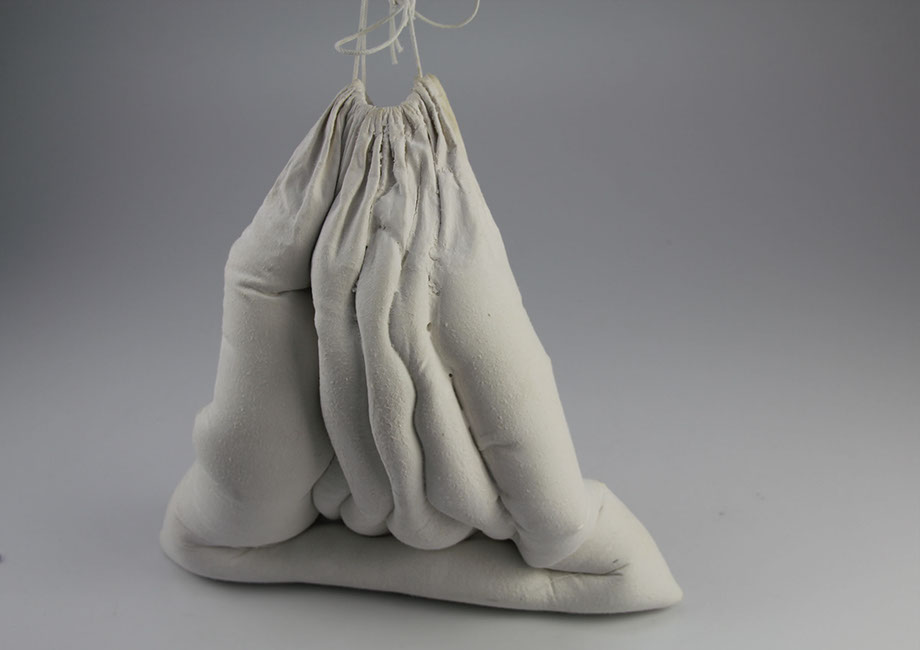
In a workshop called “Condition-forms: liquids + solids” we started by reading A New Nature by Anders Abrahamson and were inspired by his experiments with cast models. With inspiration from his thoughts about constraint and control, order and chaos Jonna Idsäter and I did a textile mold with stitches serving as constraints controlling the liquid gypsum within. It became an interesting play with what we could control and what we could not. The stitches give form to something formless but when the liquid has turned to solid the stitches serves no purpose anymore.
We then did a digital scan of the physical model in order to get a digital model. We used the program 123D Catch for the digital scanning and brought the digital model into Rhino were we investigated it further. In the digital model the solid, simple gypsum model became something a lot more complex. In the transparent mesh model all layers were visible and the expression is more like fabric.
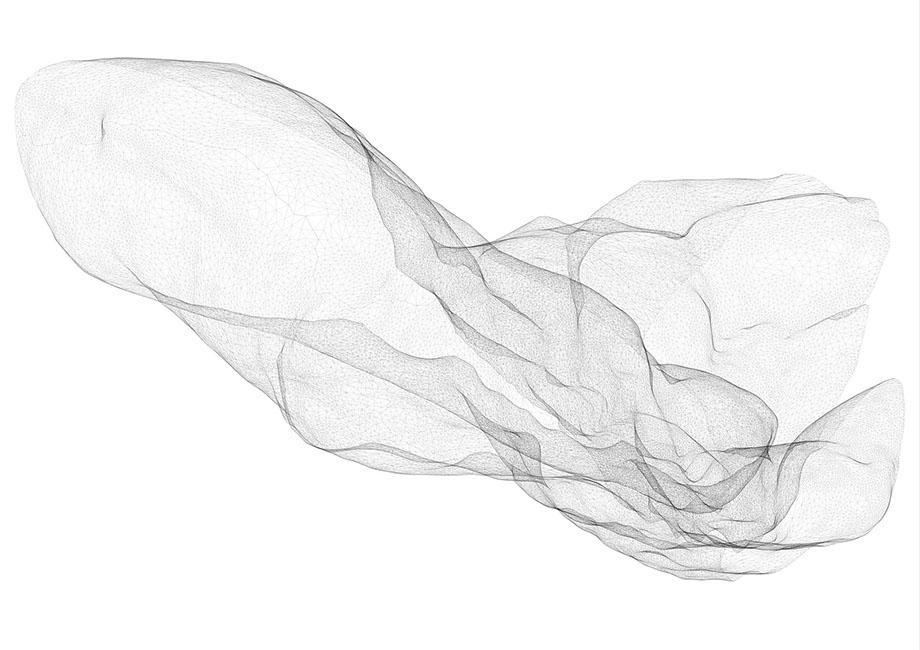
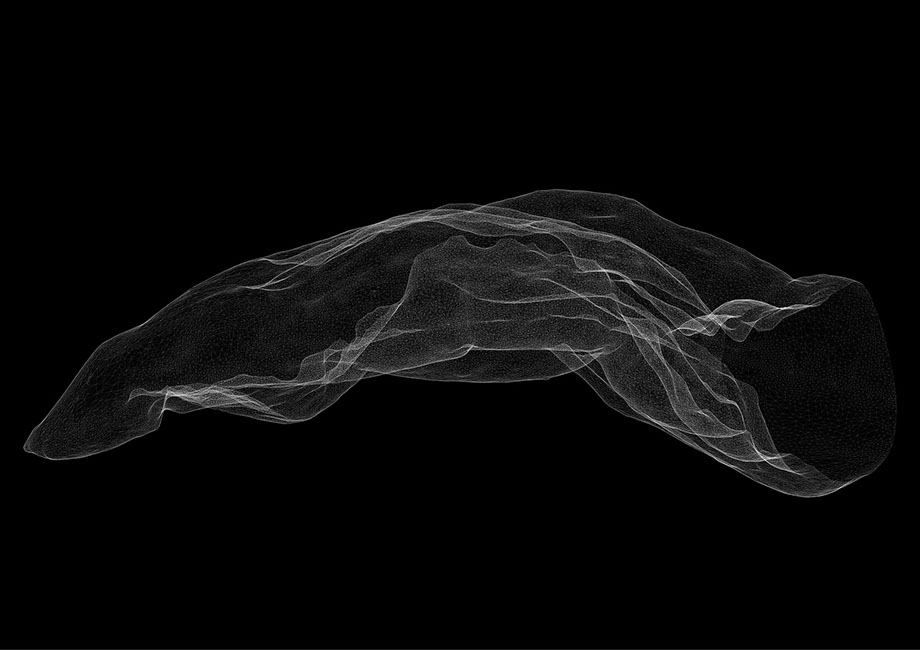
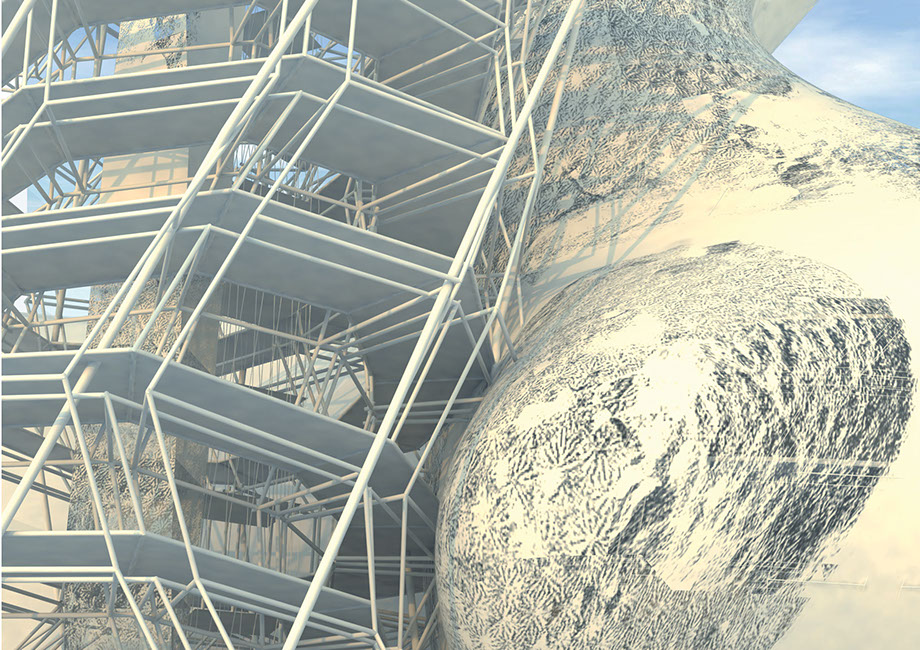
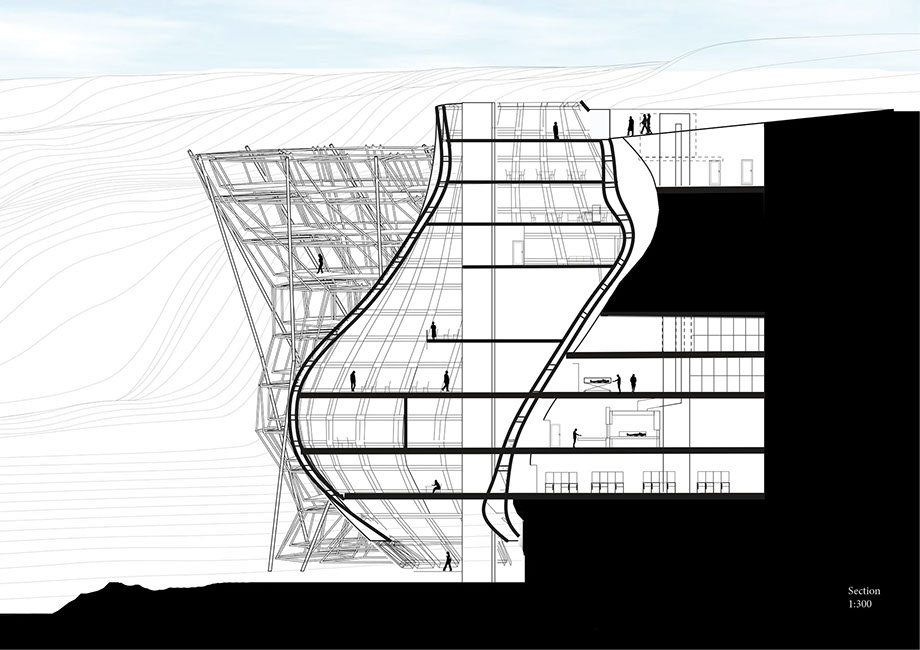
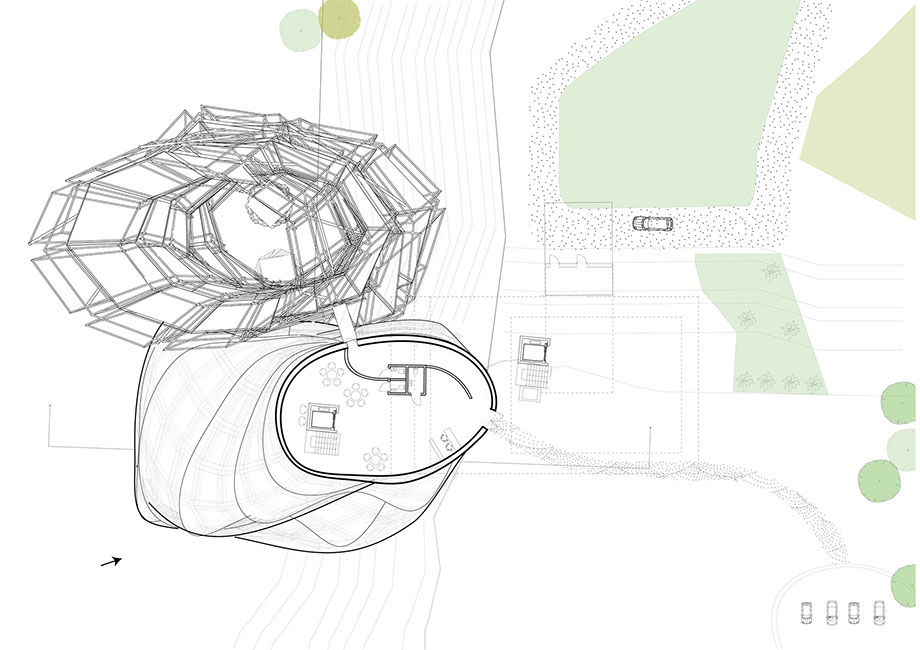
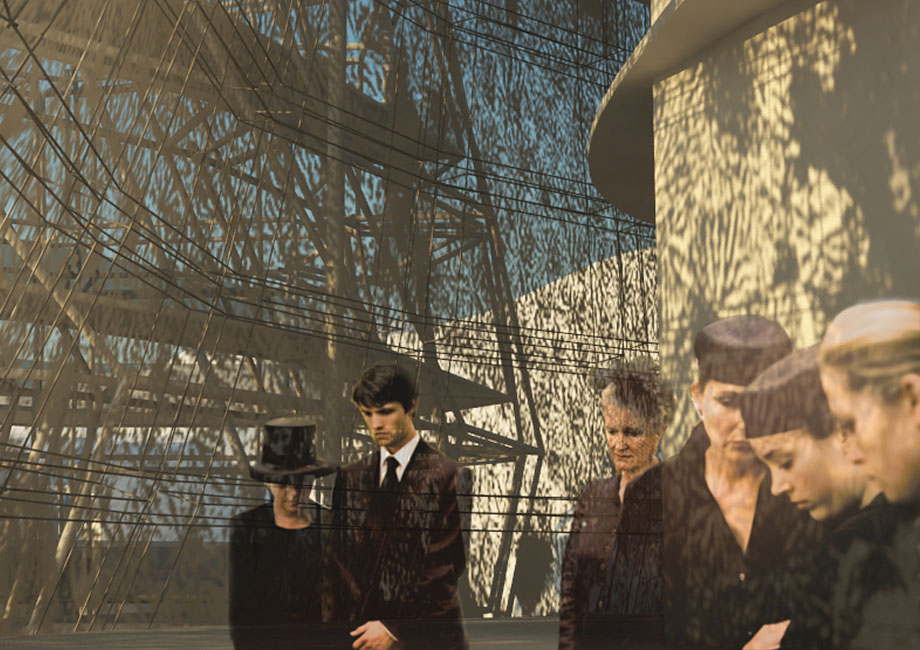
The steepness of the platforms in the quarry inspired me to make a vertical building clinging along the edge. You enter at the top and can take the stairs or elevators all the way down to the bottom of the quarry. There is a memorial grove where you can put flowers and remember. The movement downwards is also symbolic. You move down into another world, the quietness and the view is completely different in comparison to the top of the quarry.
Having a vertical building also supports an idea about guidance for the mourners. I wanted to create a place where you would not need to worry about getting lost. Therefore each level has its own purpose in the part of the building which is for visitors. The part in the mountain wall serves as support space. It is support both in its use but also it is the structural support allowing the building to hang from the wall. On the same floor as the ceremonial hall there is cold storage in the mountain, on the same floor as the ash delivery there is urn storage.
A vertical building might not be the first building type one thinks about when building a crematorium. It is probably not the most time effective or space effective building for its purpose but I do not think it needs to be. These spaces are about other things than being effective. Neither the mourning visitors nor the people who spend their whole days working with death should be in a hurry.
